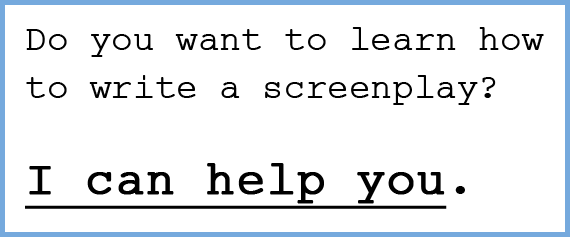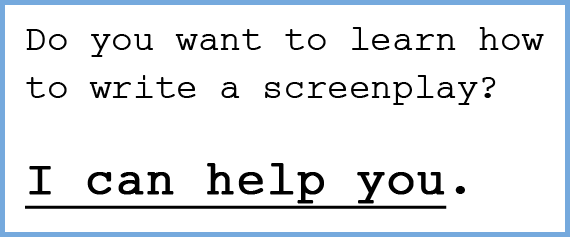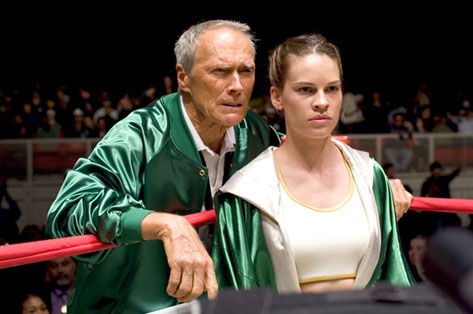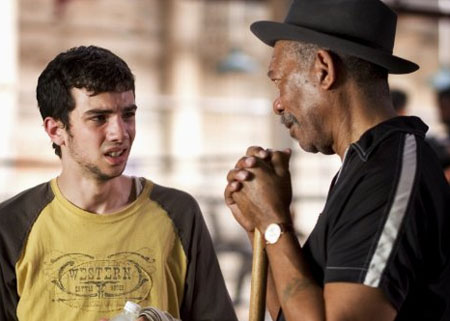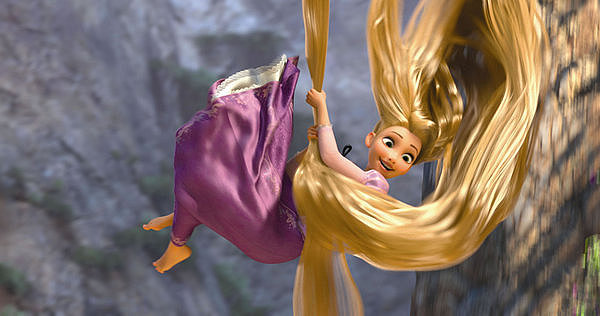Screenplay Mentor

Do you want a screenplay analysis from a Script Doctor with major movie studio credentials?
Are you looking for a screenplay coach to give you the best script consultation you can get and to mentor you through the process of how to write screenplays?
I am a screenplay teacher and script doctor with over 14 years experience in the craft and business of screenplays. I have worked for major movie studios and I live in Los Angeles, California, Hollywood, the movie and TV capital of the world.
I can give you the TOOLS — a professional screenwriting consultation to blow away all other script services — to take your script to the next level. My method is called Story Maps Screenwriting and it is the most simple, clear and effective roadmap to take you from your initial concept all the way to a polished draft that you can submit to agents, managers and producers in the movie industry in Hollywood.
-
95% of great movies follow the Story Map
Let’s look at a few examples from popular movies: The Matrix, a Science Fiction action thriller and As Good as it Gets, a Dramatic Comedy. Both movies are blockbuster hit films and employ strong Story Maps. They are very different stories in completely different genres, but employ the same storytelling structure.
As an example, I will highlight one of the unique beats found in my Story Maps structure.
The INCITING INCIDENT is an event of HIGH CONFLICT that…
- Upsets the established ORDER
- Ups the STAKES for the Protagonist
- Acts as a crucial CATALYST for the story.
- Occurs in the range of page 8 – 10 of the screenplay, or 8 – 10 minutes into the movie.
The Matrix
Exactly 10 minutes into the movie, NEO (Keanu Reeves) meets TRINITY (Carrie-Anne Moss), who tells Neo that the answer to the question “What is the Matrix?” will find him, but only if he wants it to. This introduces the LOVE INTEREST (Trinity), the THEME (Free Will vs. Destiny) and the main STORY ENGINE for Act One (Neo searches for “the Matrix.”).
As Good As It Gets
Exactly 10 minutes into the movie, MELVIN (Jack Nicholson) meets CAROL the waitress (Helen Hunt) for his daily meal. As they talk, Melvin makes a horrible remark about how her sick son will die just like the rest of us. This introduces Melvin’s LOVE INTEREST, the powerful CONFLICT between them (negative vs. positive), the THEME (Don’t let pessimism rule you) and Melvin’s central GOAL: to learn to love.
There are 9 other crucial story beats in the Story Maps structure,as well as 4 story engines and 9 main dramatic elements. These are the BUILDING BLOCKS of your story, and once you understand that I can teach you about proper screenplay format, how to write a screenplay treatment or synopsis and how to sell a screenplay.
Where are you at in the screenwriting process?
- I would like to develop an all-new concept into a screenplay with the guidance of a professional major movie studio Script Doctor.
- I would like to get professional notes and coaching on my completed screenplay.
- I would like to hire an industry pro to write or rewrite my script for me.
- I would like to learn more about the FULL CONSULTATION: Dan’s most popular and comprehensive script service.
No matter if you’re just starting out or have written several scripts, I can help you achieve your goals.
Good luck and happy writing!
Dan Calvisi

